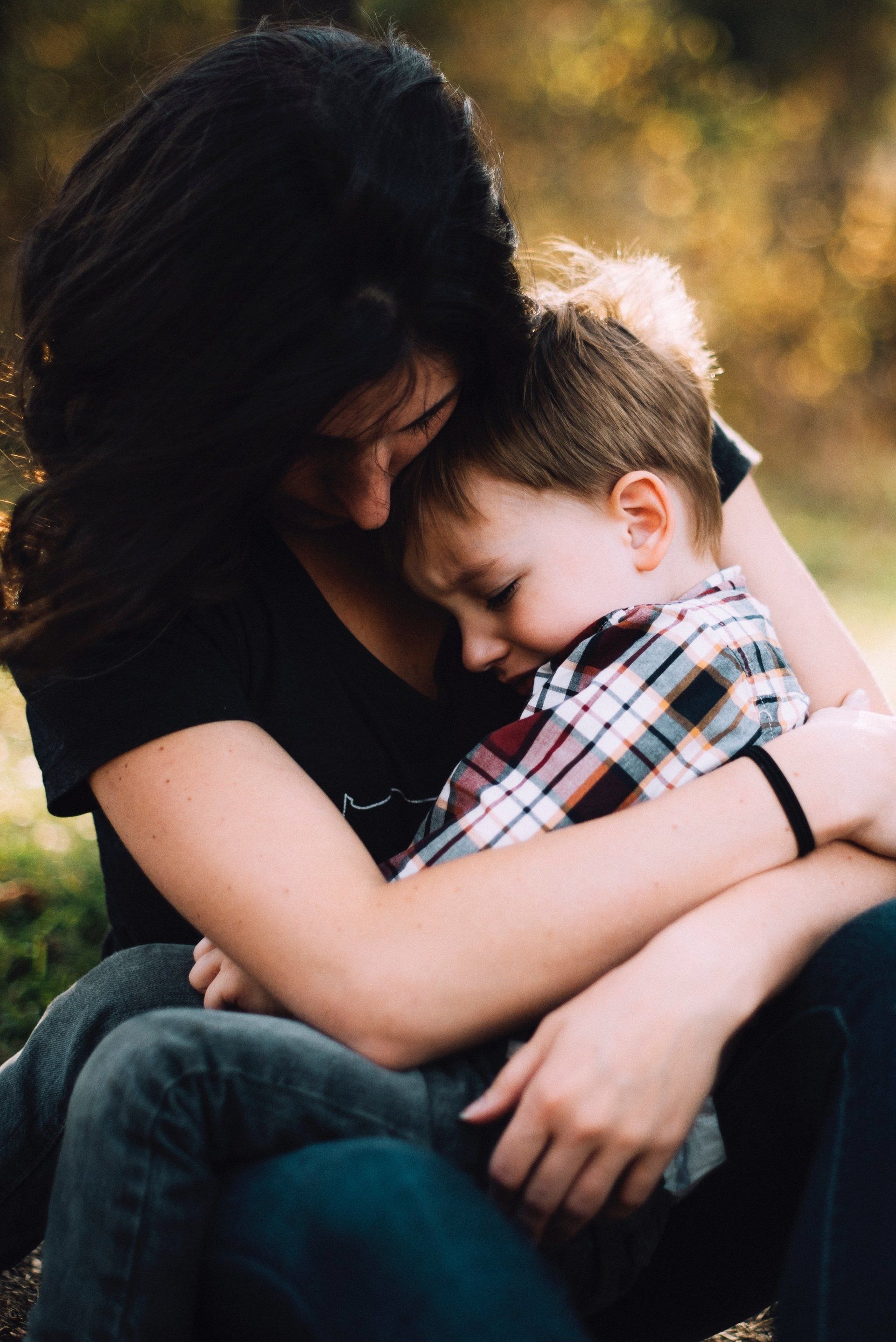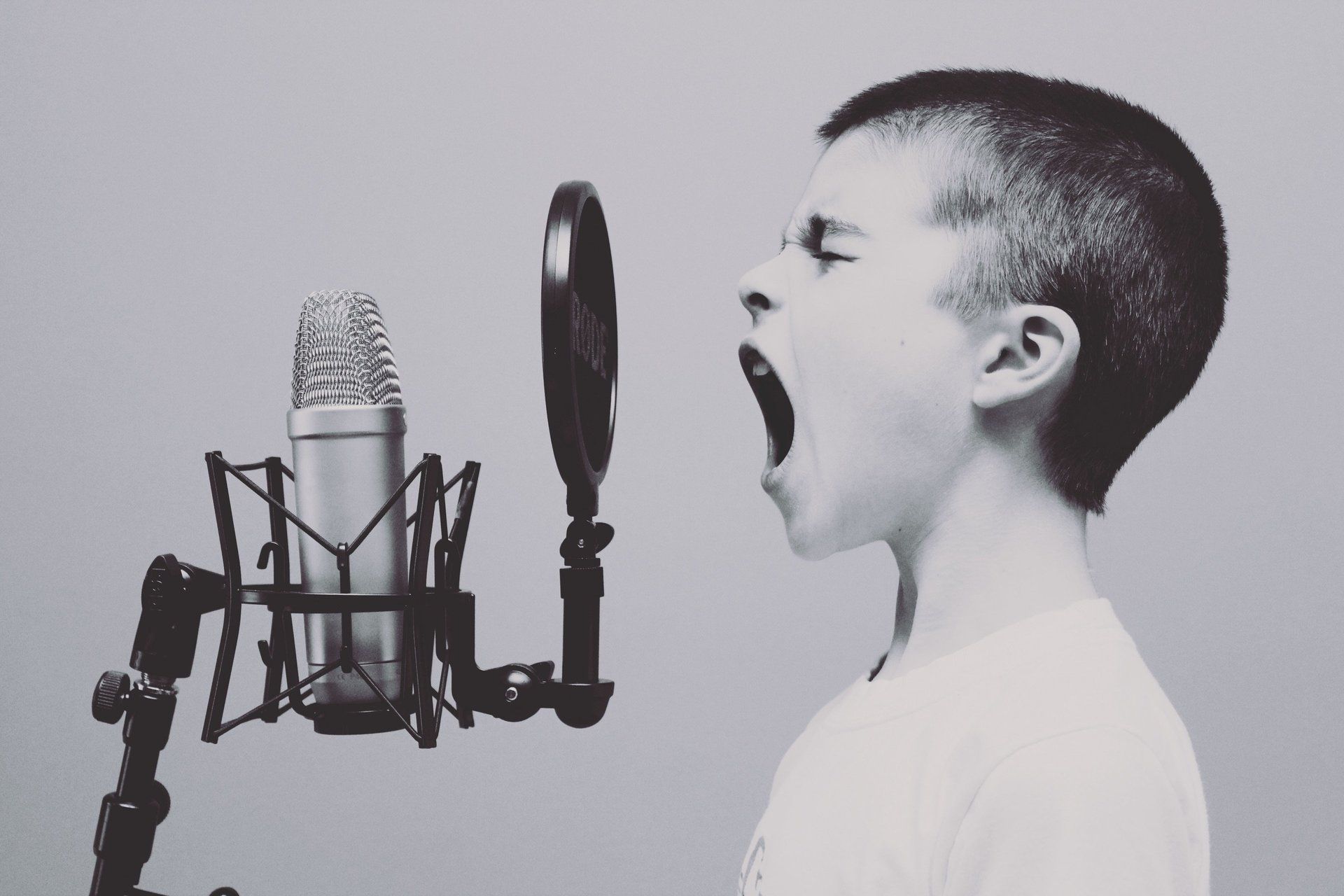Tips & Advice
Tips & Advice
Take charge. Change your life
Useful tips and information to help you better manage your child's behaviour
Tips & Advice
Useful tips and information to help you better manage your child's behaviour
Take charge. Change your life
Stop Wait Go is committed to supporting families to build happier, healthier relationships with their children.
The more support that we have helps us to achieve this.
The following Tips & advice are provided free to parents and educators. This information is a start to help you find solutions to the issues that you seek to resolve.
If you need more information, this information may help you start immediately to work on the problem, and then contact us
to see how we can help you further.
If we think that the behaviour needs intervention from other areas, we will recommend other local support services that we know will be support to you.

By Michael Hawkes
•
09 Jul, 2019
Biting most often occurs with toddlers because they have low levels of language, are impulsive and do not understand the impact that their behaviour has on others. External influences impact on a child’s behaviour such as when they are tired, hungry, teething, sick, bored or over stimulated. Children are then unable to make good choices about how to deal with social situations. Their brain is not developed enough to work effectively at such times and they make mistakes. Sometimes adults do too. If your child makes a mistake with their behaviour while in the care of others, child care, school etc it must be dealt with as soon as possible after the incident and by the staff involved. It can be very upsetting to be told that your child has been bitten or that they are biting other children. Your first job is to remain as calm as you can. The staff are keeping you informed so that we all can work together to help improve the situation. You are not expected to punish your child. You could support the educator staff by expressing your sadness at their behaviour and talking through what consequences were applied to the situation. Remember keep the discussion short. The biggest mistake that parents make is that they allow too much emotion and too much talk when dealing with behavioural issues, especially the highly emotive behaviours like biting and hitting. What does not work is: biting the child back, yelling at the child, hitting the child. What does work is teaching the child what words to use “ I can see you are angry with James, but NO biting” Remove the child from the situation and tend to the victim. When calm is returned, take the biter to the victim and offer an apology, this is modelling the appropriate behaviour. You may say sorry initially, leading to the child learning the expectation that an apology is expected. Intervention is short and delivered in a calm way. Children’s Services staff must adhere to strict policy guidelines when dealing with your children. Policy documents are available for you to read if you speak to your Director or Principal . Policy documents form part of national quality assurance guidelines that apply to all professionals working with children. These guidelines are based on recognized strategies for teaching children appropriate ways of behaving. They also recognize confidentiality in such incidents. The other mistake that adults make when dealing with their children’s behaviour is that they focus on the inappropriate behaviour, but when the child does get it right the adults fail to notice. So look for your child making approximations at appropriate behaviour, standing waiting patiently, pointing at the toy, walking away and finding another toy, coming to you for assistance. Give them praise and encouragement when they try to do the right thing even if it isn’t exactly as you want it to be. Say what you see and how it makes you feel. Eg “I noticed that you packed up your toys, that makes me feel so happy” If an incident occurs when your child is in a social situation, approach the parents calmly. They may be emotional too. Suggest the apology strategy, give empathy to the victim, tell the biter calmly and firmly “No biting”, then move on. Parents and staff working together is always the best option

By Michael Hawkes
•
09 Jul, 2019
HOW PARENTS CAN ASSIST THEIR CHILDREN TO STOP BULLYING & TEASING Teasing is verbal put downs, that are meant to hurt feelings. “I was only joking” is not an acceptable excuse for teasing Bullying can be in the form of verbal harassment if it is repeated, or a form of physical intimidation. It often includes threats. Bullies believe that they have the right to make you do or behave in a certain way. Bullying is repeated The most important thing for parents to remember is to listen to what their children are saying when they are feeling intimidated. Often incidents of bullying go unchecked because children are too afraid, embarrassed, or don’t have the words to describe what is happening to them. It takes time to listen. One of the biggest mistakes that parents make is that they talk too much and don’t listen enough. If your child does start to open up, let them do the talking. Don’t go into a mode of police interrogator, get angry or emotional. This will block communication and the child is most likely to shut down. That is when you don’t get the full story. Listen calmly, write down facts, it helps you stay focused and ask questions later. Be empathetic: “You must have been feeling really upset” “That must have been hard for you” “What did you do after that?” Teaching Strategies STAY CALM Ask how this made the child feel What have they done so far to try and solve the problem? Talk about the physical symptoms that they experienced i.e. racing heart, sick in the stomach Practise the following response Stand tall, shoulders back, make eye contact Use a calm , low, slow tone of voice. Say “STOP teasing me I don’t like it” You can hold your hand up Walk away calmly. Ask yourself has the feeling gone away Practice : Get the child to repeat this several times. This trains the brain to respond even when under attack. Practise so often you can respond calmly almost without thinking. If you have tried to deal with the problem yourself and it doesn’t go away you need to get help from an adult. Who are the adults that you know and trust? Physical Attacks This always requires assistance from an adult. Go straight to a teacher or the principal. Teach children about the people who are in the school that they can seek out for help. Principal, teachers, school based police, office ladies, Bi-lingual officers. Keep telling adults until it stops Dobbing This is telling on someone just to get them into trouble. Asking an adult to help you when you are teased or bullied is not dobbing

By Michael Hawkes
•
09 Jul, 2019
3 STRANDS OF EFFECTIVE CLASSROOM MANAGEMENT SUPPORTIVE Use effective communication strategies. Be assertive. Once a consequence has been applied –move on. Re-establish a positive relationship. Every session/ day is a clean slate. Develop a climate of mutual respect. Friendly but not friends. Build a safe, caring relationship of honesty and trust with each child. Know who else may have a relationship with the child in the school or community who might be able to help with a problem. Do a class activity –write on a hand shape ‘Who would you talk to if you needed help’ See Protective Behaviours Program Make time to listen. Set up lessons , tasks, questions that ensure success but also that sets up for success early. Programming that matches children’s needs and interests, think fun and energy. Know when children need to have a quiet time. Have a chill out zone (not time out). Have a buddy system. Use trained peer mediators . Say “sorry” when we get it wrong. Look for positives and strengths and tell them. Keep parents informed and focus on positives too. Walk and talk through issues. Use a team collegial team approach and use an Individual Behaviour Plan - (pro-forma on DET website) when a team approach is necessary. Note what works and what doesn’t for the teacher the next year. Private or public praise, use body language, nod, wink, thumbs up. Vary it. Mean it. Praise and encourage approximations. Don’t wait for the task completion. Separate the behaviour from the child. BE: consistent/persistent/fair. Negatives increase negative behaviour Positives increase positive behaviour PREVENTATIVE Rules/consequences. Negotiated, reflected on, in positive language, change for needs of the group. Organized routines. Efficient data collection, tally of T/O incidents. Evidence for further intervention. What are possible triggers for the behaviour? Have back up planning for when unexpected things happen. Use positive language and use “I want to see” and “I’m looking for…. Be explicit. It looks like, sounds like and feels like. PLAN-practised responses so that you can be calm and in control of yourself. Ask how things are going, remember what they told you and refer back ie “How did the fishing go with your Dad?” Patrol , be on your feet not at your desk. Know what influences behaviour, tired, hungry, hot, cold, trauma, disability, family dysfunction, illness, low self esteem, fear of failure. Look for patterns in behaviour: Traffic Light Sheet ( See DET website) Know the child/ family. Develop a rapport with students/family Allow children to sit with friends, when it doesn’t work separate for the day only. We work better when we are in our comfort zone Have adults sit with child and model classroom behaviours with young children. Focus on positives Offer mutual respect Allow choices Use tangible rewards with care. Use whole class rewards – the farm. Work toward excursions Tribes strategies –Sense of Community, Circle time, Team building skills Our school values, social stories, Show Appreciation Group work doesn’t just happen, it needs to be taught Attend to positives/approximations CORRECTIVE Give opportunities to make good choices: remind , warn, act or 123 before application of consequences. This gives the child the option of getting themselves under control, some need explicit teaching of how this can be done. Praise and encourage when they try to do that. Say what you saw and how it made you feel. “I noticed you packed up without being asked, I am so proud of you” Make consequences logical, and connected to the behaviour. ‘Make a mess clean it up’ What was the trigger? Do I need to attend to that? Always attend immediately if someone is hurt Tactically ignore inappropriate low level attention seeking behaviours. Ask yourself why is this chid needing to get my attention with inappropriate behaviour instead of appropriate behaviour. Defuse Re-direct Know when to step up or step back Wait till calm is restored before dealing with an angry person Encourage owning the behaviour Don’t try to resolve the problem until everyone concerned is calm –both mind and body It is not the intensity of the consequence that changes behaviours but the consistency and logical connection to the inappropriate behaviour. Teach new behaviours rather than punish old behaviours.

By Michael Hawkes
•
09 Jul, 2019
The key to emotionally healthy children is in knowing how to maintain a family environment that meets the child’s five critical needs. There are five essential elements to raising emotionally healthy children. The key is that children feel: Respected Important Accepted Included Secure How do we ensure that these elements are present in our home? A child feels respected when they are treated in a respectful manner. Talking about this at a recent workshop for parents, one mum said, “I have just realized that I would never talk to people at work in the same way that I ask my children to do something.” Children treat others with respect when they are treated that way themselves. When they make a mistake correction occurs through teaching, not punishing. Say “I don’t like the way you are acting” and walk away. When the behaviour is respectful, encourage it, feed it, reward it with your positive attention. Behaviour that is given praise and encouragement is likely to be repeated. Listen to your child’s opinions Include them in discussions about family issues, decisions, history, daily events. Make them feel like they belong in your family, both near and far, their school and in our community. All these activities make them feel like they are valued, are important and that they are capable of making a contribution to the family group. That doesn’t mean that you always have to do what they have suggested. Parents are older, more experienced and wiser than their children, so they maintain the right of veto when making decisions are needed. But it is a valuable learning experience to be asked to take part in conversations about decisions rather than being told as an afterthought. Security comes when we are listened to, get our needs met, we are guided, helped, encouraged and belong to our family group and our community. This high quality support enhances our emotional health, builds a strong self esteem, aids resiliency and it lasts lifetime. You may like to read more, see How to Raise Emotionally Healthy Children: Meeting the Five Critical Needs of Children … And Parents too! Gerald Newmark. U.S.A. www.emotionallyhealthychildren.org or www.stopwaitgo.com.au for more information.

By Michael Hawkes
•
09 Jul, 2019
Is hitting an acceptable strategy to use when disciplining children? There are many effective ways to teach children discipline that do not require physical punishments like hitting. As parents we are aiming for children who are self-disciplined. Clearly that doesn’t happen overnight. But if we focus on the teaching of self- control that comes from within, the child learns the values and beliefs that are important. Values such as consideration of the feelings of others as this promotes a harmonious society, being part of a team has responsibility because that makes teams work, manners are necessary and help to invoke respect. Mostly, self- discipline comes from the role models within our family. Do I role model being in control of my anger, to be respectful of the feelings of others, even when mine differ? Or do I lie, cheat, hate, over indulge, consider only myself and lack the skills to solve problems. Parents teach their children through their own behaviour. This is much more powerful than physical punishment or smacking which puts the focus on the behaviour that you don’t want. That does not mean that children will never misbehave. You might still have occasions where you want to scream or hide behind the supermarket shelves and pretend that the child is a stranger to you. Children make mistakes. When children are stressed, feel unloved, are tired, bored, sick, unhappy, worried, angry, sorry or upset their brain is not efficient in helping them control their emotions and solve problems. This is when they misbehave. Be proactive, TEACH children the behaviour that you want, use sound strategies that are used consistently and demonstrate self-control. Prepare your children for what is going to happen, consider what needs to happen to make it successful for you and the child. Have activities to keep them interested, role model prior to events “ when we go to the doctors we will wait and sit quietly, then we will go into the room and the doctor will ask you some questions. When we are finished we can have a treat. What would you like to do? ” Praise and encourage when they get it right, even the approximations, “ Good try! ”

By Michael Hawkes
•
09 Jul, 2019
Emotional Coaching: Experiences help children to get a sense of who they are and their emotional self. As part of these experiences they need good congruent feedback that leads them to develop the ability to manage their emotions. When we deal with their emotions by anger, we teach that anger and using power over others is the way to manage strong emotions. Emotional Coaching immerses children in the language of feelings and attunement. Observe and recognize their emotion Listen to what they are saying Label the feelings with stem statements Set limits with children and help them problem solve. You won’t believe the result of your acknowledgement of their feelings. Stem Statements “ I hear that you are feeling upset/angry ” “ I am sure it is very frustrating for you ” “ That feeling in your tummy is warning you that the anger is getting control, I understand how that is feeling uncomfortable ” “ While you are that angry you cannot get control of yourself, we need to use our calming strategies ” “ That feeling in your tummy is saying you are really angry, we could try going to your room until that feeling has gone ” These reflective stem statements allow the cessation or slow- down of the hormone cortisol. It may take 5 statements, delivered in a calm, slow and low tone, with a little space in between, if you are doing it right you will register the slowing down of the meltdown. Calm Breathing The following strategy needs to be taught when not in a meltdown and practised. After reading a story when lying on the bed is a good idea. Breathing out for longer than breathing in E.g. Breathe in 123, breathe out 123 ½ is a natural mechanism to reduce stress hormones. Relaxing the muscles that are tense Move down the body squeeze your face up let it go Squeeze you shoulders up to your ears and let go etc all the way down to the toes flexing and relaxing the muscles. Breathing as above.
MENU
Website designed and developed by Captovate





